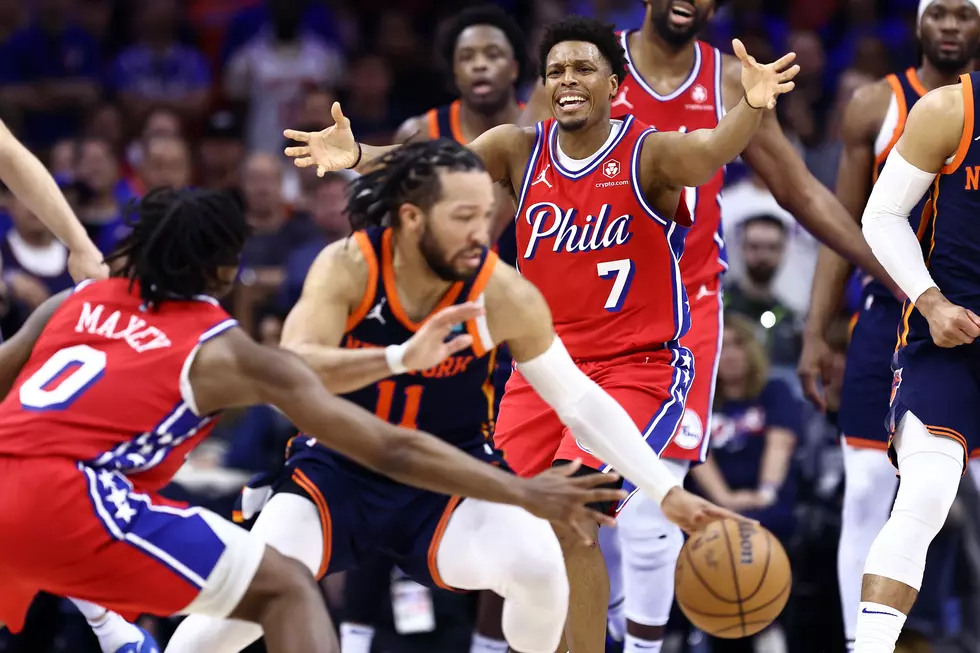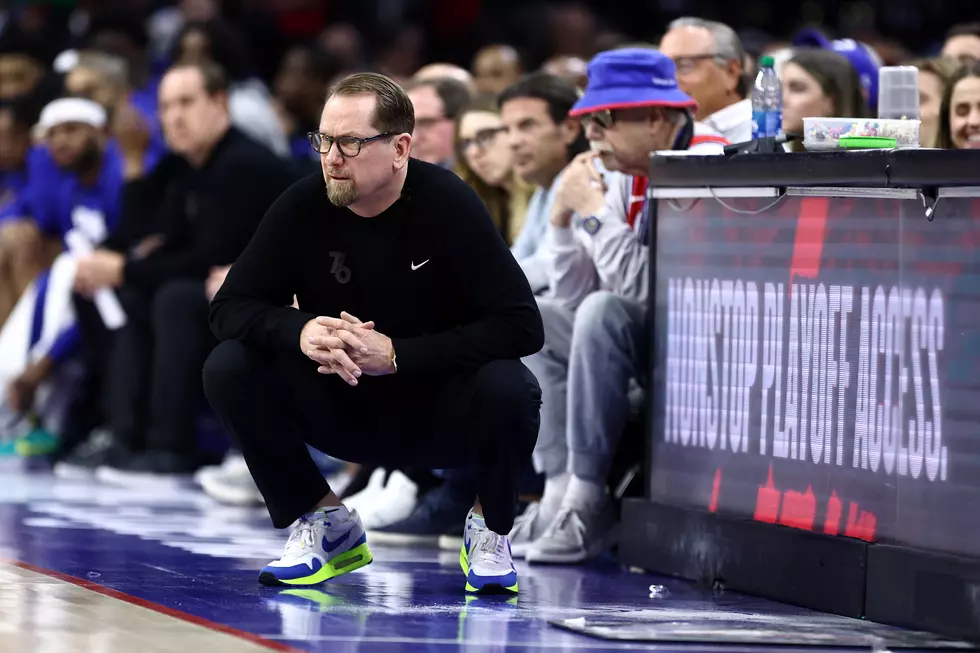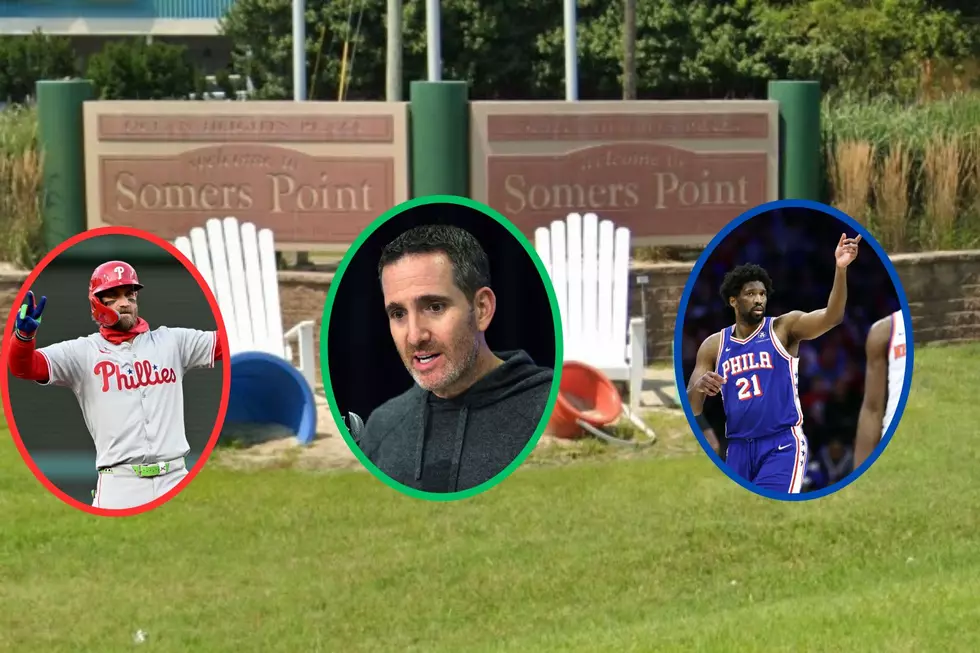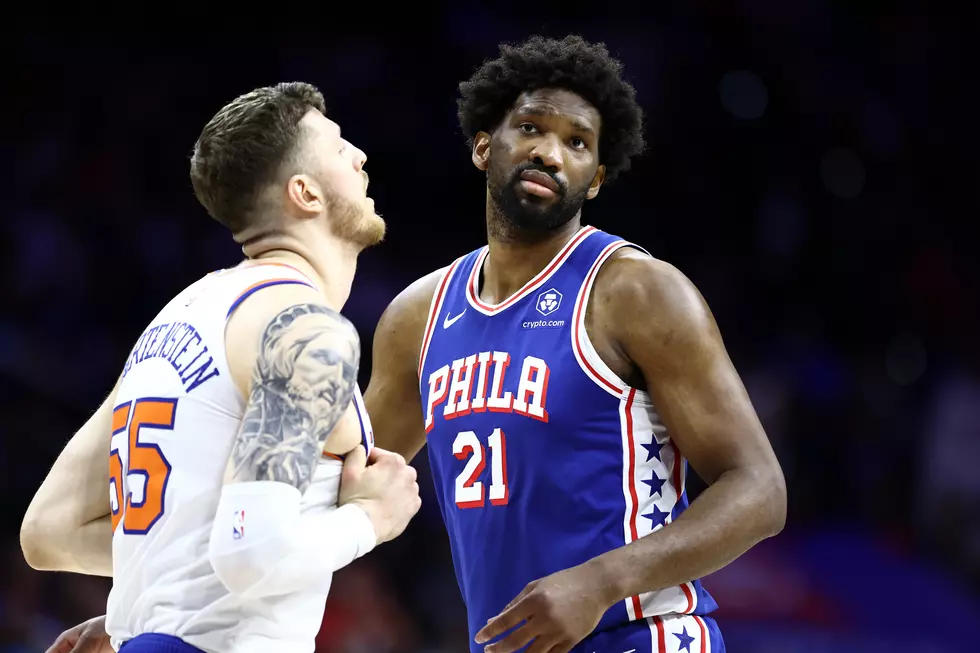
What do the numbers say about the Sixers through 10 games?
The Sixers have jumped out to an 8-3 start through their first 11 games, trailing only the Boston Celtics in the Eastern Conference. An eight-game winning streak followed Philadelphia's season-opening loss to the Milwaukee Bucks, and now a two-game skid is testing the Sixers. Do the numbers support the winning pace Philadelphia has jumped out to? Or, is their current formula too suspicious to maintain the production?
Let's start out with point differential.
Third in point differential
The Sixers are third in the league in nightly margin, outscoring opponents by 7.7 points on average, per NBA.com. Only the Celtics and Denver Nuggets - two inner-circle title contenders - have better differentials. If the last three seasons represent a trend, that might run thinner - not just for the Sixers, but for the teams ahead of them.
Teams typically do not produce an average point differential in the double digits. The best teams each year usually outscore the opposition by six-to-nine points per game. Boston, which leads the league in differential, sits at +13.4 through 11 games.
If we project Philadelphia's record over an 82-game season using its current pace, the Sixers should produce 59-60 wins. Over the last three seasons, a point differential of plus-7.7 would've matched up with roughly 59 wins.
Checks out, practically to perfection.
However, there is not a correlation between significant point differential and hoisting the Larry O'Brien trophy. The reigning-champion Nuggets outscored the opposition by 3.3 points per game; the '21-22 Golden State Warriors outscored opponents by 5.5 points per game; the '20-21 Utah Jazz, which blitzed the league by more than nine points on average, lost in the second round of the playoffs; the '20-21 Atlanta Hawks fought one-possession wars in their average game, and they got to the Eastern Conference finals.
Advanced numbers tend to have more championship equity. Let's look at ratings.
Sixth in halfcourt offense
History says NBA champions typically have to rank in the top 10 of the league in offense and defense. The Sixers are currently fourth in offense (120.8 points per 100 possessions) and 12th in defense (112.1 points allowed per 100 possessions), according to Cleaning The Glass (CTG).
In Philadelphia's case, after years of watching their offense wilt against set defenses in the second round of the playoffs, halfcourt offense should be the focus.
The Sixers are scoring 101.8 points per 100 halfcourt possessions this season, per CTG. I don't really care about the number, itself. Rather, the focus should be on where that places amongst the 30 teams, and how much transition offense props up Philadelphia's overall scoring relative to other teams.
CTG calculates that the Sixers are sixth in points per 100 possessions added by transition play. The concern should be whether that is covering up a rather mediocre halfcourt figure. Philadelphia sports the sixth best halfcourt offense in the league right now, which passes the test.
You could justifiably retort that the Sixers were fourth in halfcourt offense last season, and, yet, they fell apart when it mattered most.
The counter should be that last season's team had a halfcourt offensive rebounding rate of 24.8 percent, which ranked 26th in the league. CTG says Philadelphia gets the rebound on 27.2 percent of its own misses in the halfcourt this season. That is good for 18th in the league. Not great, but the early returns suggest that the Sixers are giving themselves more bites at the apple than they did last season.
Turnover rate and free throw margin
The Sixers are sixth in turnover rate and 20th in opponent turnover rate. At the moment, they're winning the possession battle by a hair. Philadelphia averages 27.4 free throw attempts per game; opponents get to the line for 23.7 attempts per game. So, the Sixers essentially have a working margin of plus-3 before the game even starts.
I think there's a lot of room for that possession margin to improve. The personnel will only develop more chemistry on offense, and, when everyone has been available, they've shown encouraging synergy on defense.
However, given the aggressive brand of defense Philadelphia deploys, I suspect the free throw margin will remain relatively slim.
29th in three-point frequency, 30th in corner threes
My primary concern thus far lies in the Sixers' shot profile.
They're currently 29th in three-point frequency, and 30th in frequency of corner threes, per CTG.
"I think, for sure, we are. I do like our rim rate is way up there. It's kind of like football, you want to establish your running game a little bit. Getting to the basket is certainly a priority first," Nick Nurse said after Tuesday's six-point loss to the Indiana Pacers - a game in which Philadelphia shot just 6-for-22 from deep and was outscored from beyond the arc by 21 points.
"But yeah, I think, in this league, you got to be able to keep some type of pace. You're going to have a hard time winning - let's see, what is it, 39-18 from the three-point line tonight. It's not like you got to win the three-point game, but you got to be relatively close, right? So, yeah, we need to make a few more."
You can't control makes and misses, but you can control your shot selection. 29th in total frequency and 30th in frequency on the "short" threes isn't going to cut it.
To Nurse's point, however, Philadelphia is third in frequency of shots at the rim. That 38.7 percent governs the Sixers' shot diet by a significant margin. That would, in theory, be a palatable counter to a rather barren three-point game.
Except, the Sixers are 24th in accuracy at the rim.
Perhaps as puzzling is that Philadelphia is 10th in three-point accuracy.
The rather inverted nature of the Sixers' shot diet is likely being saved by the fact that they're 20th in frequency of long twos. So, Philadelphia isn't taking enough threes, but they're not settling for shots outside of the paint, either.
CTG estimates that the Sixers have a location effective field goal percentage of 55 percent, which is tied for sixth in the league. That is to say, if they shot league average from each location, the Sixers would have the sixth most efficient shot profile in the NBA.
You combine that with their low turnover rate and league-leading free throw rate, and you can see why the offense is working.
But, that three-point volume must come up.
24th in opponent rim frequency and 20th in opponent three-point frequency, but 9th in opponent corner threes
The shots that Philadelphia allows the most of are the most efficient shots in basketball. That is why they're 25th in opponent location effective field goal percentage, per CTG. In other words, the Sixers' defense has had some luck on its side through these first 11 games.
Teams are not shooting well at the rim against the Sixers, and they're not taking many corner threes. Philadelphia has made a point to coax opposing offenses into shots at the rim because they have a dominating interior presence anchoring their defense and threes above the break because they're the deepest shots in the game.
Teams are making those above-the-break threes against the Sixers at a league-average clip.
Philadelphia is more than willing to let teams chuck long twos; opponents are shooting nearly 50 percent(!!!) in that range.
You add Joel Embiid's impact on the interior, opponent three-point luck, strong defensive rebounding to counter a bottom-third opponent turnover rate, and a sub-standard opponent free throw rate together, and you get the 10th best defense in the NBA.
The Sixers are tied for 18th in the league in halfcourt defense, but sixth in the league in points allowed per 100 transition plays, according to CTG.
Given the opponent turnover and free throw rates, that halfcourt figure is not surprising.
Tyrese Maxey is the team's second best player, and opposing offenses consistently target him on switches. Maybe Maxey, himself, is not necessarily committing fouls. But, schemes to help him in isolated mismatches against great offensive players might leave the Sixers vulnerable to fouls elsewhere on the court. You combine that with their handsy defensive principles and you get a team that is inevitably going to rack up fouls.
That, coupled with opponents consistently ending their possessions with shots rather than turnovers, makes for a sub-average halfcourt defense.
What is saving Philadelphia right now is the effort they put into transition defense and their health on offense. The Sixers don't turn the ball over often, they get to the free throw line a ton. Most of their possessions end in a shot or a stoppage, so they have a chance to get back on defense.
When they don't, though, there are usually multiple bodies getting back to protect the basket. They're making plays on the ball. Philadelphia, by and large, is not giving up easy baskets.
I think there's a case to be made that the defense should improve once the likes of Nico Batum and Kelly Oubre Jr. are back in the lineup. But, with the opponent shooting luck hitting early for Philadelphia, there's likely to be a regression to the norm at some point.
That, coupled with the uninspiring opponent turnover and free throw rates, makes you wonder just how much better this defense can be with the personnel this team currently has.
You contrast that against an offense that isn't taking nearly enough threes, and you come out thinking there's a ways to go until the numbers support the Sixers' record.
Where to watch Eagles Games in Atlantic and Cape May Counties
Gallery Credit: Josh Hennig/Townsquare Media
More From 97.3 ESPN









